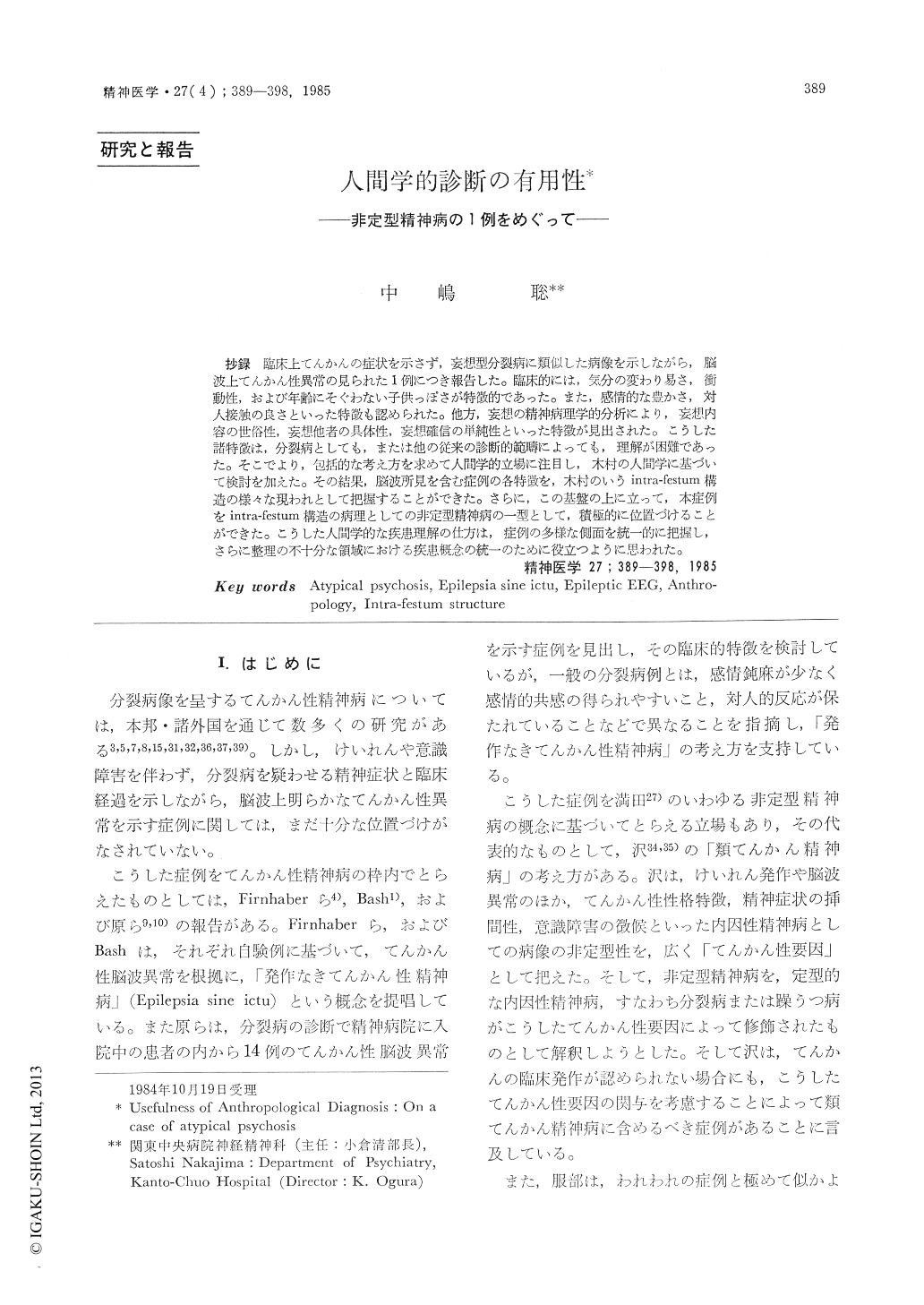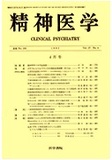Japanese
English
- 有料閲覧
- Abstract 文献概要
- 1ページ目 Look Inside
抄録 臨床上てんかんの症状を示さず,妄想型分裂病に類似した病際を示しながら,脳波上てんかん性異常の見られた1例につき報告した。臨床的には,気分の変わり易さ,衝動性,および年齢にそぐわない子供っぼさが特徴的であった。また,感情的な豊かさ,対人接触の良さといった特徴も認められた。他方,妄想の精神病理学的分析により,妄想内容の世俗性,妄想他者の具体性,妄想確信の単純性といった特徴が見出された。こうした諸特徴は,分裂病としても,または他の従来の診断的範疇によっても,理解が困難であった。そこでより,包括的な考え方を求めて人間学的立場に注目し,木村の人間学に基づいて検討を加えた。その結果,脳波所見を含む症例の各特微を,木村のいうintra-festum構造の様々な現われとして把握することができた。さらに,この基盤の上に立って,本症例をintra-festum構造の病理としての非定型精神病の一型として,積極的に位置づけることができた。こうした人間学的な疾患理解の仕方は,症例の多様な側面を統一的に把握し,さらに整理の不十分な領域における疾患概念の統一のために役立つように思われた。
A case of psychosis in a 24-year female was reported. Her clinical picture resembled paranoid type schizophrenia. Though she had no episode of epileptic symptoms her EEG showed epileptic abnomality. As opposed to typical schizophrenia she was emotionally responsive and quite sociable. Moreover, it was noticeable that she was impulsive, capricious, and childish for her age. The psychopathology of her delusion was characterized by its worldliness, lack of anonymity in characters appearing in it, and lack of signs of doubt in her conviction. Through these characteristics the case was distinguished from schizophrenia, and none of the other common diagnoses could sufficiently explain them. In an attempt to reach a diagnosis which may fulfill these characteristics we resorted to "anthropology," that is, a holistic approach to a human being which seeks a structure underlying all aspects of human behaviors. Among others we chose Kimura's anthropology. On the basis of his theory the various characteristics of our case could be interpreted as manifestations of "intra-festum structure,"which means a way of existence that gives advantage to the present as opposed to the future or the past. Moreover, our case could be positively classified as belonging to a particular type of atypical psychosis, which represents pathology of pure "intra-festum structure." Her electroencephalographical abnormality also seemed to be explained as a manifestation of this anthropological structure in the physiological aspect. Such an anthropological viewpoint as was taken here seemed to have an advantage in uniting various aspects to reach a systematic understanding of a case. It also looked hopeful to attain a more satisfactory diagnostic concept through this approach, especially where nosological classification remains equivocal.

Copyright © 1985, Igaku-Shoin Ltd. All rights reserved.


